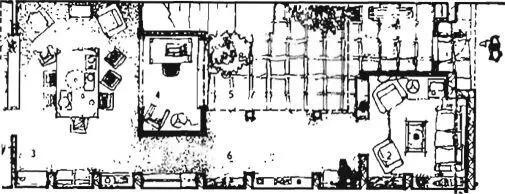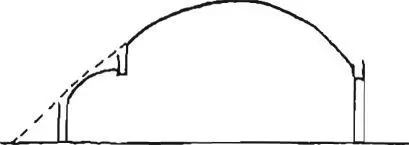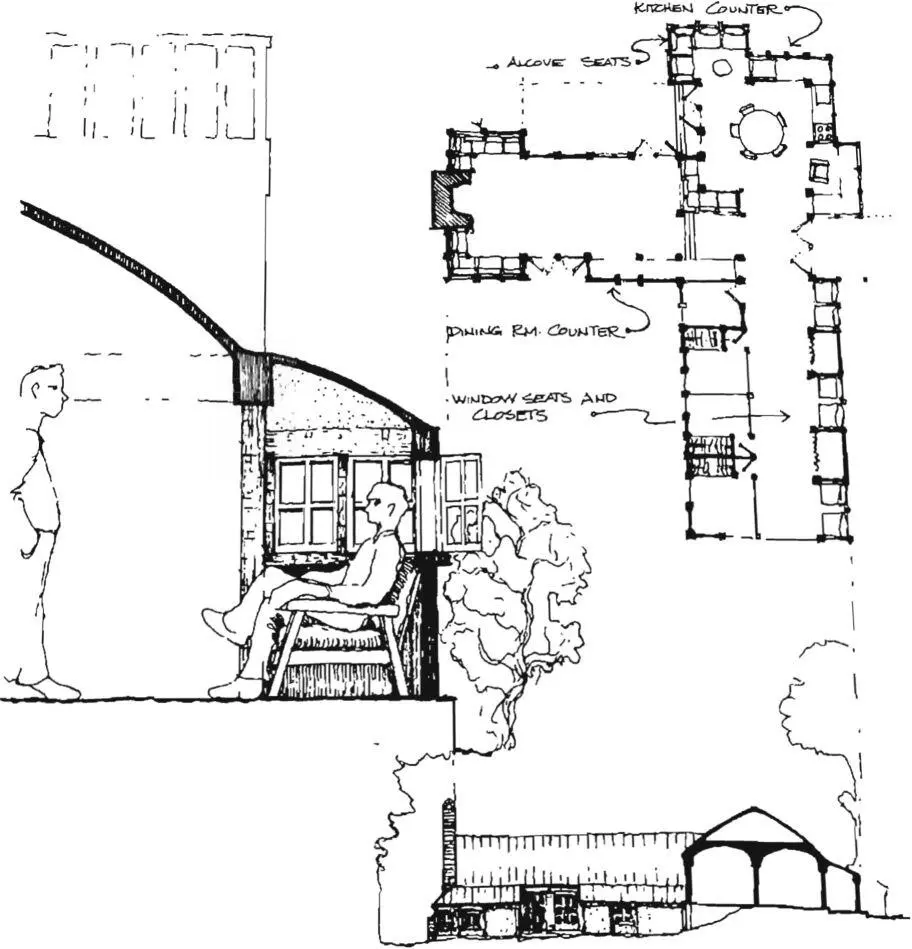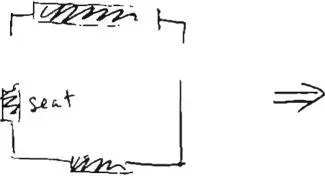Christopher alexander - A pattern language
Здесь есть возможность читать онлайн «Christopher alexander - A pattern language» весь текст электронной книги совершенно бесплатно (целиком полную версию без сокращений). В некоторых случаях можно слушать аудио, скачать через торрент в формате fb2 и присутствует краткое содержание. Жанр: Прочая научная литература, на английском языке. Описание произведения, (предисловие) а так же отзывы посетителей доступны на портале библиотеки ЛибКат.
- Название:A pattern language
- Автор:
- Жанр:
- Год:неизвестен
- ISBN:нет данных
- Рейтинг книги:3 / 5. Голосов: 1
-
Избранное:Добавить в избранное
- Отзывы:
-
Ваша оценка:
- 60
- 1
- 2
- 3
- 4
- 5
A pattern language: краткое содержание, описание и аннотация
Предлагаем к чтению аннотацию, описание, краткое содержание или предисловие (зависит от того, что написал сам автор книги «A pattern language»). Если вы не нашли необходимую информацию о книге — напишите в комментариях, мы постараемся отыскать её.
A pattern language — читать онлайн бесплатно полную книгу (весь текст) целиком
Ниже представлен текст книги, разбитый по страницам. Система сохранения места последней прочитанной страницы, позволяет с удобством читать онлайн бесплатно книгу «A pattern language», без необходимости каждый раз заново искать на чём Вы остановились. Поставьте закладку, и сможете в любой момент перейти на страницу, на которой закончили чтение.
Интервал:
Закладка:
THICK WALLS ( I 97) j SUNNY COUNTER ( I 99) , BUILT-IN SEATS
(202), child caves (203), secret place (204). The beauty of a natural building is that these thick walls—since they need lower ceilings, always, than the rooms they come from—can work as buttresses.
Once the roof layout (209), and the floor and ceiling layout (210) are clear these thick walls can be laid out in such a way as to form the most effective butresses, against the horizontal thrust developed by the vaults.
We have established inTHICK walls (197), how important it is for the walls of a building to have “depth” and “volume,” so that character accumulates in them, with time. But when it comes to laying out a building and constructing it, this turns out to be quite hard to do.
The walls will not usually be thick in the literal sense, except in certain special cases where mud construction, for example, lends itself to the making of walls. More often, the thickness of the wall has to be built up from foam, plaster, columns, struts, and membranes. In this case columns, above all, play the major role, because they do the most to encourage people to develop the walls. For instance, if the framework of a wall is made of columns standing away from the back face of the wall, then the wall invites modification—it becomes natural and easy to nail planks to the columns, and so make seats, and shelves, and changes there. But a pure, flat, blank wall does not give this kind of encouragement. Even though, theoretically, a person can always add things which stick out from the wall, the very smoothness of the
wall makes it much less likely to happen. Let us assume then, that a thick wall becomes effective when it is a volume defined by columns.
 |
| Thick walls made effective by columns. |
How is it possible for a wall of this kind to justify its expense by helping the structure of the building? The fact that the building is conceived as a compressive structure, whose floors and roofs are vaults—efficient structure (206), means that there are horizontal thrusts developed on the outside of the building, where the vaults do not counterbalance one another.
To some extent this horizontal thrust can be avoided by arranging the overall shape of the building as an upside down catenary—see cascade of roofs ( i 16). If it were a perfect catenary, there would be no outward thrust at all. Obviously, though, most buildings are narrower and steeper than the ideal structural catenary, so there are horizontal thrusts remaining. Although these thrusts can be resolved by tensile reinforcing in the perimeter beams—see perimeter beams (217)—it is simplest, and most natural, and stable to use the building itself to buttress the horizontal thrusts.
This possibility occurs naturally wherever there are “thick walls”—alcoves, window seats, or any other small spaces at the outside edge of rooms, which can have lower ceilings than the main room and can therefore have their roofs shaped as continuations of the ceiling vault inside. This requires that thick walls be outside the structure of the main room, so that their roofs and walls come close to forming a catenary with the main vault.
 |
| Alcoves within the catenary. |
. . . next to the mosaic of subcultures (8), perhaps the most important structural feature of a city is the pattern of those centers where the city life is most intense. These centers can help to form the mosaic of subcultures by their variety; and they can also help to form city country fingers (3), if each of the centers is at a natural meeting point of several fingers. This pattern was first written by Luis Racionero, under the name “Downtowns of 300,000.”
* ❖ ❖
There are few people who do not enjoy the magic of a great city. But urban sprawl takes it away from everyone except the few who are lucky enough, or rich enough, to live close to the largest centers.
This is bound to happen in any urban region with a single high density core. Land near the core is expensive; few people can live near enough to it to give them genuine access to the city’s life; most people live far out from the core. To all intents and purposes, they are in the suburbs and have no more than occasional access to the city’s life. This problem can only be solved by decentralizing the core to form a multitude of smaller cores, each devoted to some special way of life, so that, even though decentralized, each one is still intense and still a center for the region as a whole.
The mechanism which creates a single isolated core is simple. Urban services tend to agglomerate. Restaurants, theaters, shops, carnivals, cafes, hotels, night clubs, entertainment, special services, tend to cluster. They do so because each one wants to locate in that position where the most people are. As soon as one nucleus has formed in a city, each of the interesting services—especially those which are most interesting and therefore require the largest catch basin—locate themselves in this one nucleus. The one nucleus keeps growing. The downtown becomes enormous. It becomes rich, various, fascinating. But gradually, as the metropolitan area grows, the average distance from an individual house
CONSTRUCTION
It is of course rare to be able to have the alcove or thick walls approach a true catenary section—we hardly ever want them that deep or that low. But even when the thick walls and alcoves are inside the line of the catenary, they are still helping to counter outward thrusts. And their buttressing effect can be improved still more by making their roofs heavy. The extra weight will tend to redirect the forces coming from the main vault slightly more toward the ground.
The drawing below' show's the way this pattern works, and the kind of effect it has on a building.

The effect of thickening the outer walls, shown m flan nnd section.
986
21 I THICKENING THE OUTER WALLS
Therefore:
Mark all those places in the plan where seats and closets are to be. These places are given individually byalcoves (179),WINDOW PLACES (l8o), THICK WALLS (197),SUNNY COUNTER (199), WAIST-HIGH SHELF (20l), BUILT-IN SEATS (202), and so on. Lay out a wide swath on the plan to correspond to these positions. Make it two or three feet deep; recognize that it will be outside the main space of the room; your seats, niches, shelves, will feel attached to the main space of rooms but not inside them. Then, when you lay out columns and minor columns, place the columns in such a way that they surround and define these thick volumes of wall, as if they were rooms or alcoves.
For shelves and counters less than 2 feet deep, there is no need to go to these lengths. The thickening can be built simply by deepening columns and placing shelves between them.
 |
| (//pi |
1 to 3 feet of thickness
Читать дальшеИнтервал:
Закладка:
Похожие книги на «A pattern language»
Представляем Вашему вниманию похожие книги на «A pattern language» списком для выбора. Мы отобрали схожую по названию и смыслу литературу в надежде предоставить читателям больше вариантов отыскать новые, интересные, ещё непрочитанные произведения.
Обсуждение, отзывы о книге «A pattern language» и просто собственные мнения читателей. Оставьте ваши комментарии, напишите, что Вы думаете о произведении, его смысле или главных героях. Укажите что конкретно понравилось, а что нет, и почему Вы так считаете.












